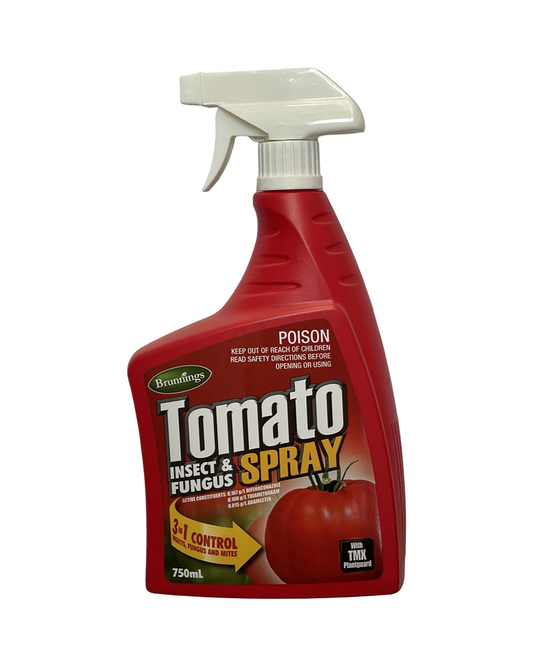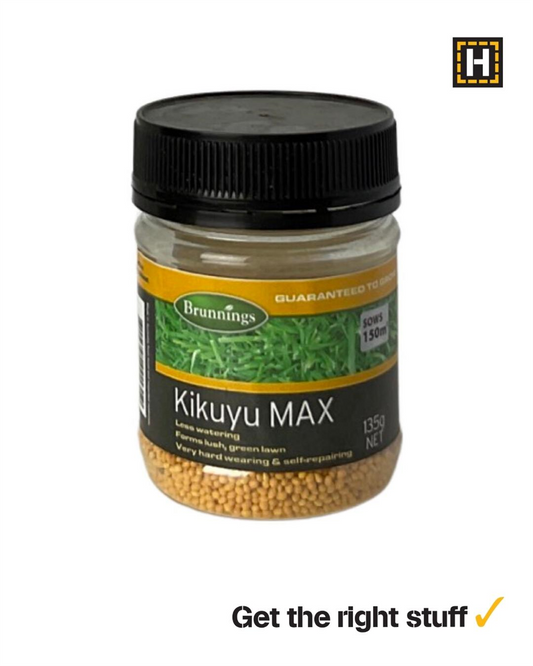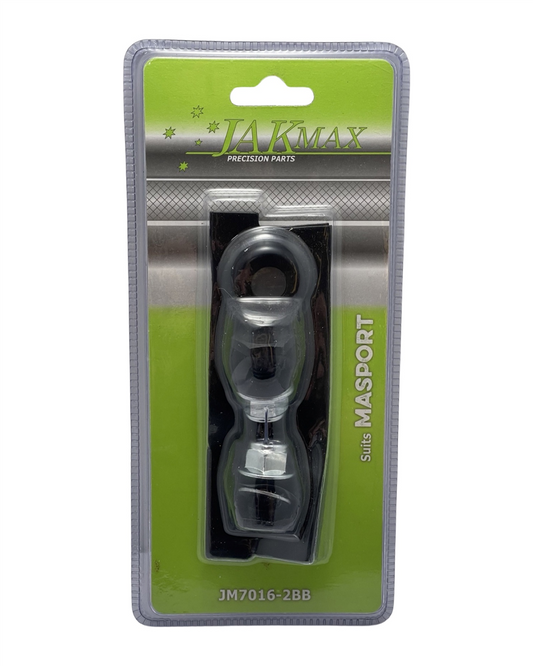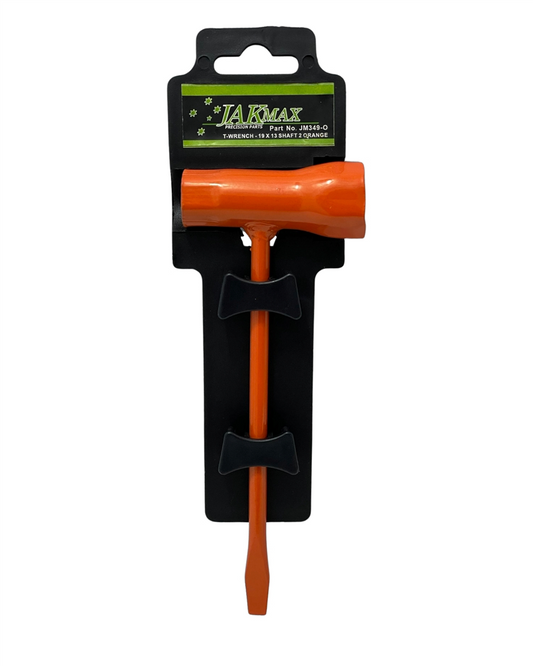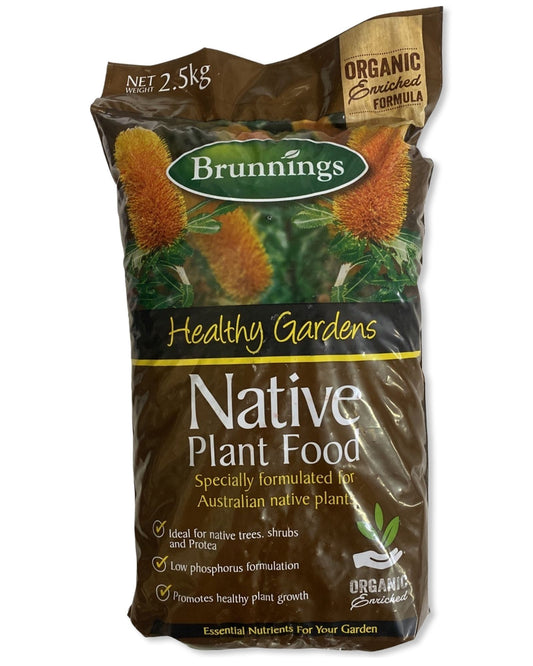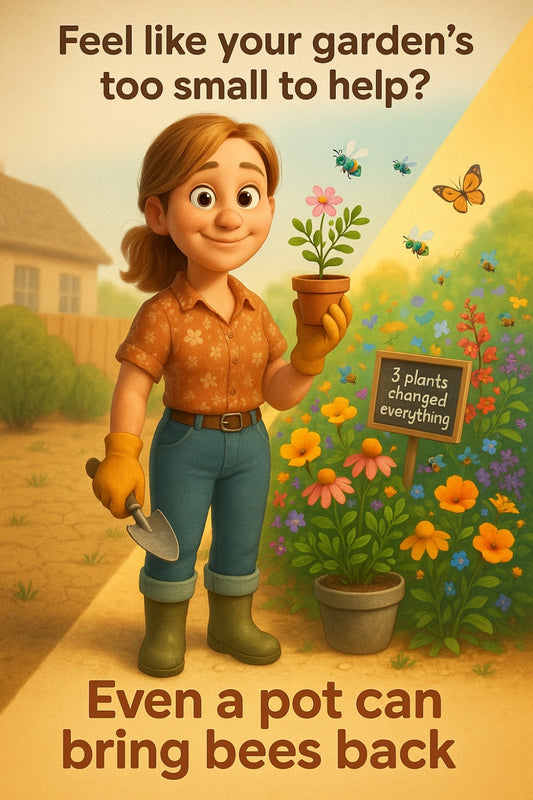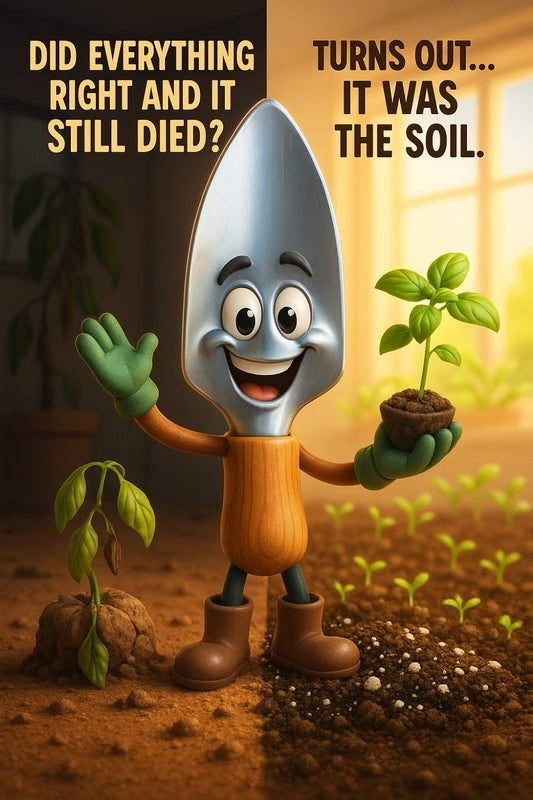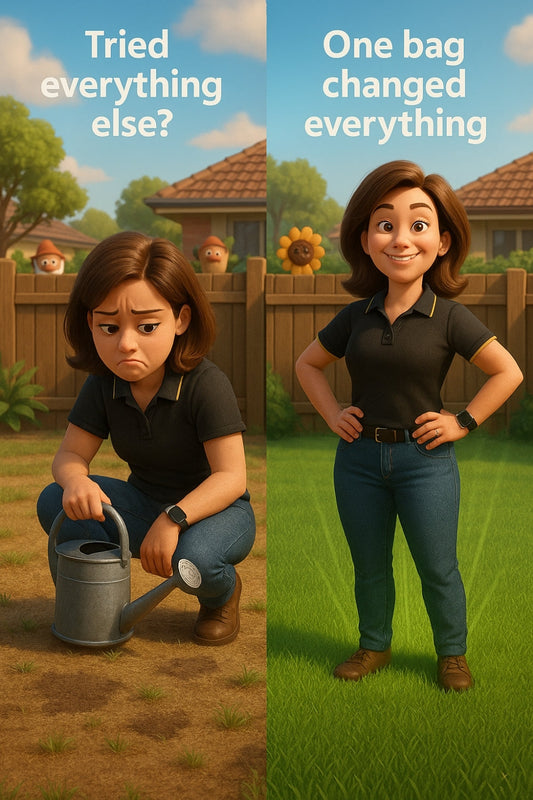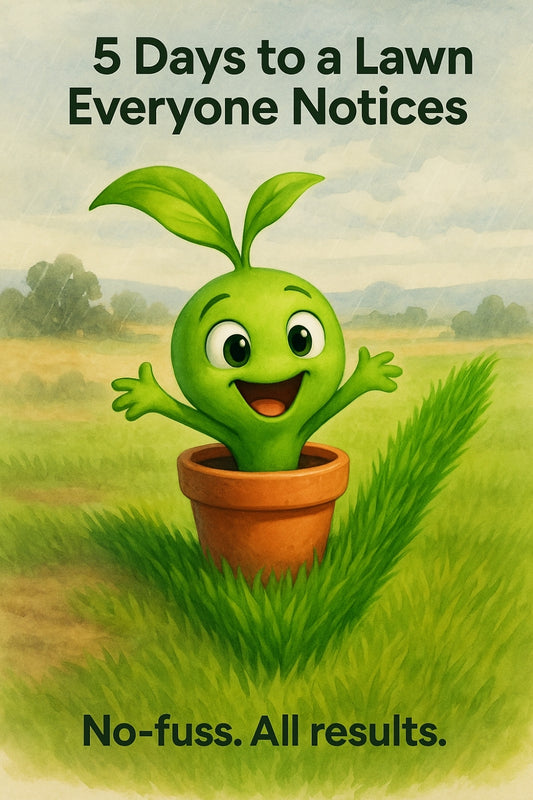What makes soil compaction so damaging and how to prevent it
Share
Why Soil Compaction Could Be Wrecking Your Garden & How to Fix It
Picture this: You’ve put your heart and soul into your garden. You’ve chosen the perfect plants, watered diligently, and even thrown in a little pep talk for good measure. But something’s not right. Your plants are struggling, water just sits on the surface, and nothing seems to grow as it should. Sound familiar? You might be dealing with soil compaction.
What Exactly is Soil Compaction?
Soil compaction happens when the particles in your soil get squeezed together so tightly that air, water, and plant roots can’t move freely. Think of it like trying to breathe in a crowded elevator – there’s just no space! This can happen from heavy foot traffic, using heavy machinery, or even just frequent watering without enough aeration.
Why is Compacted Soil So Bad?
Healthy soil should be a mix of minerals, organic matter, water, and air pockets. When soil gets compacted, those precious air pockets disappear, making it harder for roots to spread and absorb nutrients. Here’s how it affects your garden:
- Poor Drainage: Water struggles to seep into the ground, leaving puddles on the surface or running off instead of nourishing your plants.
- Stressed Plants: Roots need oxygen, and compacted soil cuts off their supply. This leads to weak growth, yellowing leaves, and stunted development.
- More Weeds, Fewer Flowers: Some hardy weeds thrive in compacted soil, leaving your carefully chosen plants gasping for survival.
- Hard Work for Little Reward: You’ll find yourself needing to water, fertilise, and fuss over your plants more often, yet they won’t flourish as they should.
How to Prevent Soil Compaction
The good news? You can stop compaction in its tracks before it wrecks your gardening dreams. Here’s how:
- Avoid Walking on Garden Beds: Try placing stepping stones or pathways to keep foot traffic off delicate soil.
- Use Raised Beds or No-Dig Gardening: Raising your garden beds or following no-dig methods keeps soil loose and full of life.
- Mulch, Mulch, Mulch: Organic mulch like straw or compost keeps soil protected, encourages worms (nature’s aerators), and adds nutrients as it breaks down.
- Introduce Cover Crops: Plants like clover or mustard can act like a living soil conditioner, breaking up compacted layers naturally.
- Avoid Working Wet Soil: Digging or walking on moist soil can squash it down even more. Wait for it to dry out before planting or tilling.
What If It’s Already Compacted?
If your soil is already as solid as a brick, don’t panic. Try these fixes:
- Aerate Gently: A garden fork can be used to poke holes and loosen things up without disturbing beneficial microbes.
- Add Organic Matter: Compost, aged manure, and mulch help improve soil structure over time.
- Let Worms Do the Work: Encourage earthworms by adding organic materials – they naturally tunnel through soil, keeping it fluffy.
- Gypsum for Clay Soils: If you’re battling heavy clay, a sprinkle of gypsum can help loosen it without changing the pH.
Keep Your Soil Happy and Healthy
Healthy soil is the foundation of a thriving garden. By taking a few simple steps, you can prevent compaction and create a lush, vibrant space where plants thrive. So, grab your mulch, invite some worms to the party, and give your soil the care it deserves – your garden will thank you for it! 🌱
Happy gardening!
Candeece
 Stay Connected
Stay Connected
Join our gardening community on Facebook: Urban Gardener's Notebook
And follow our Store Facebook Page: Strathalbyn H Hardware on Facebook

